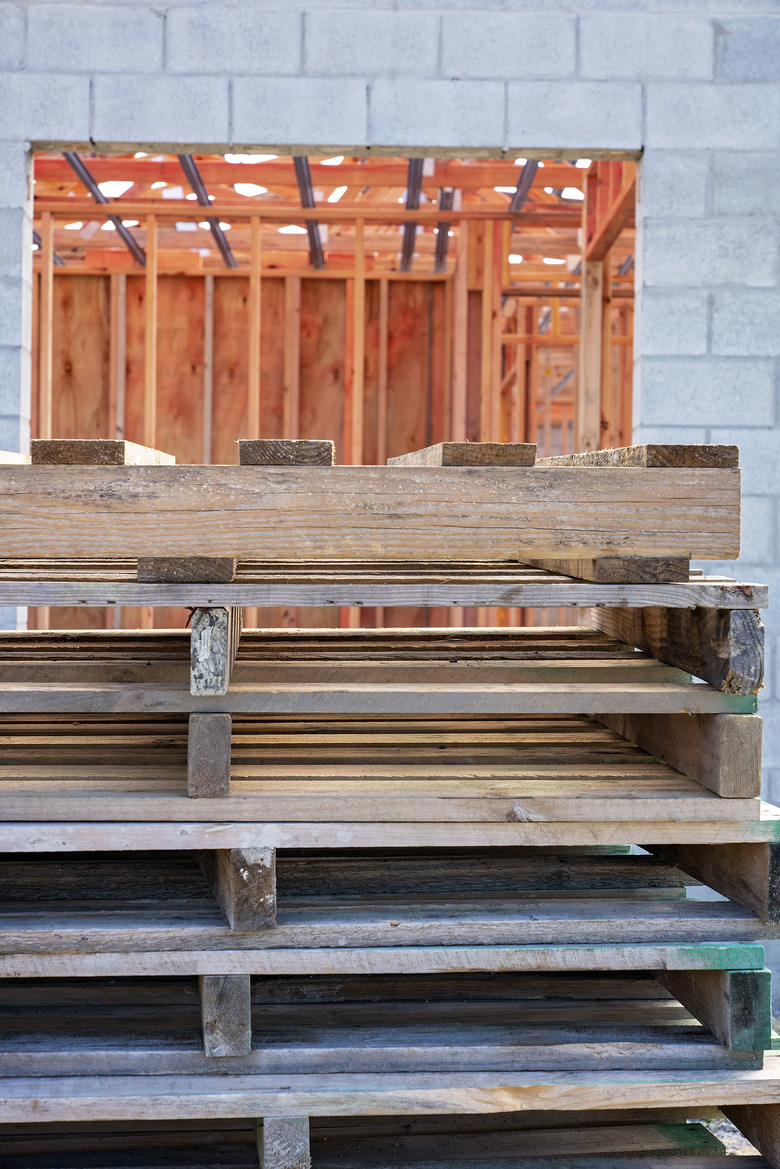How To Build Using Recycled Pallets
Thanks to their widespread availability and low cost, pallets have become a popular building material for a variety of creative do-it-yourself projects for the home and garden. For some projects, you may need to separate the boards of your pallet, while others may call for it in its original form.
Where to Find Pallets
Where to Find Pallets
Pallets are used by retailers for moving merchandise and shipments on and off of delivery trucks. In some cases, stores may be willing to give away old pallets for free or at a low cost. Inquire at the customer service desk whether you can purchase or take away old pallets. Many stores will agree to this request.
If you are looking for pallets at a store, start with places that do not sell anything that might involve chemicals or pesticides. You don't want the pallet, which is made of porous wood, to be covered in chemicals. Nurseries, masonry stores, liquor stores and grocery stores might have clean pallets that have not been exposed to dangerous substances.
Selecting Pallets
Selecting Pallets
Pallets come in a variety of sizes and configurations. In North America, the standard size of a pallet is 48 inches by 40 inches, but this may vary by industry. This standard pallet is often called a GMA pallet. The arrangement of wood within a pallet can also vary depending on the way they will be used. Two-way pallets have forklift openings on only two ends, whereas four-way entry pallets have openings on all sides. Partial four-way entry pallets have standard openings on two ends and smaller openings on the other two. If your project calls for a certain type of pallet, check its construction before selecting. If you will be maintaining the pallet in its original form for your activity, be sure to select pallets that are all the same variety.
You should check your pallets for a stamp that reads "HT." This means that the pallet was heat treated. Other pallets might have a "CT" stamp to denote chemical treatment. Heat-treated pallets are a better choice for most projects.
In addition, look for cracks, knots or warped pieces before choosing a pallet. The quality of wood within a pallet matters greatly for many projects. In addition, consider the wood grain, color and other aesthetic properties of the pallet. Will it match other wood you might be using for the same project? How will it look in your home or garden?
Lastly, select pallets that do not have marks from spills or marks, such as writing or stamps. These will be more visually appealing.
How to Use Pallets
How to Use Pallets
Some projects require you to disassemble pallets before use and work with their pieces. For these projects, you can use a hammer and pry bar or deck wrecker tool to separate boards. Be sure to wear heavy duty work gloves and safety goggles while doing this. Depending on the needs of your project, it is also possible to use a portable circular saw to cut boards away from the pallet. Take extreme care when using a saw so you don't hit any nails or screws.
If you desire a rustic look for your finished product, you can keep pallet wood as is, although you may wish to lightly sand it for safety. If not, clamp wood to a sturdy table or workbench and use a power sander or planing tool to smooth it. Once the boards appear as you'd like, you can paint or stain them, if desired.
What to Make with Pallets
What to Make with Pallets
The beauty of pallets is in their versatility. Since they are essentially preassembled platforms, pallets can be used to make chairs, tables, planters, storage solutions and even small sheds. If you are planning to join whole pallets together, use screws rather than nails whenever possible. Additional reinforcement, such as via elbow brackets, is ideal when the project permits.
You may find that instructions for your project call for stacking pallets together. If you do this, keep in mind that the project will be stronger if you alternate the directions of the pallets rather than align them as you stack.
